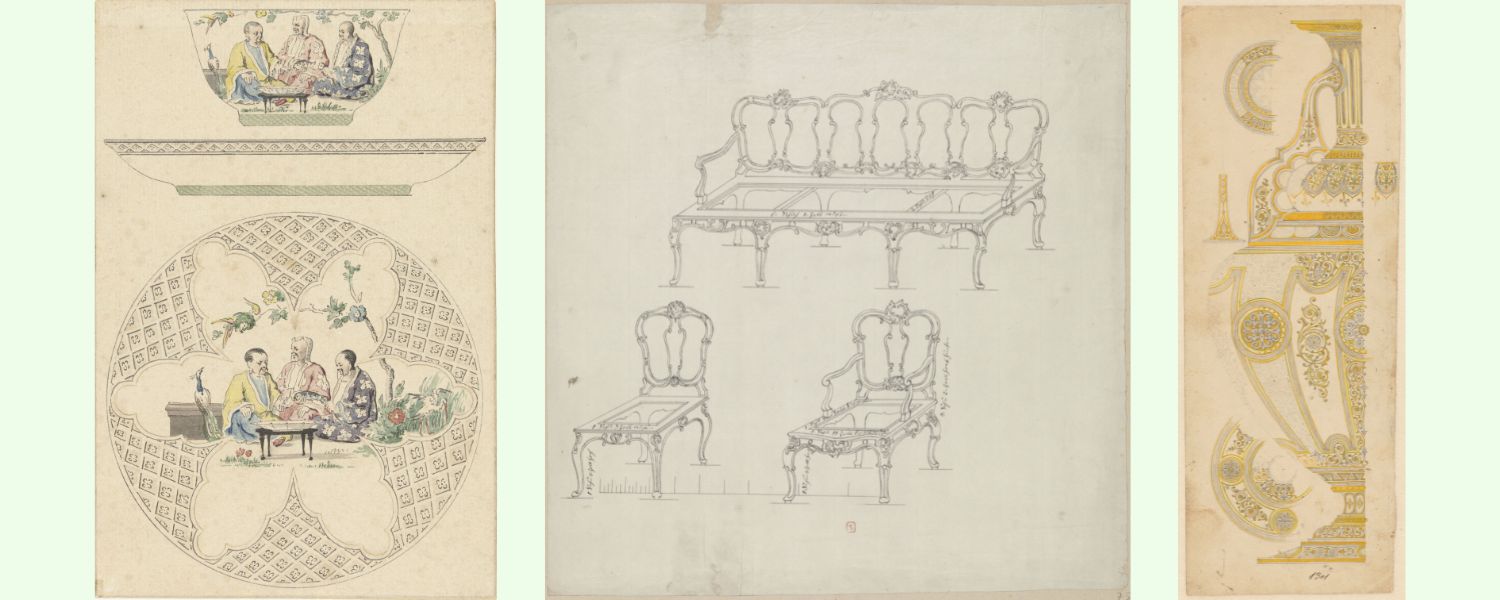While a beautiful object was being made, many drawings were produced. They varied from quick sketches to try out a shape or decorative motif, to full-scale model drawings for particular elements of the work in question. Once the object was completed, those drawings were normally discarded, as they had fulfilled their role. Happily, some examples have survived nonetheless.

Left to right: Cornelis Pronk, design for a cup and saucer of Chinese porcelain, c. 1734-1737. Unknown, design for a side chair, an armchair and a sofa, c. 1760-1770. Draughtsmen in the workshop of Eusebio en Plácido Zuloaga, designs for damascened iron borders and a damascened iron vase, c. 1870–1880.
Work drawings and prototypes
Nowadays, many work drawings are still made by designers to get their product into production, for example, or as a blueprint for a new building. Although that is not always necessary anymore, since much information can also be explained by 3D printing an object or using a prototype. That is exactly what bag designer Yvette van Eijndhoven does. After making sketches, she soon starts working on a prototype, with which she then flies to the factory in Italy. In the video below, she talks more about her design process.
